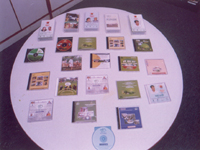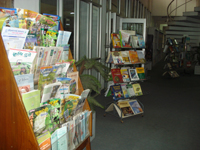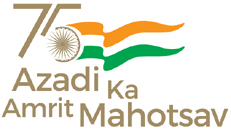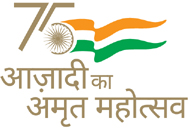



Journal of Agricultural Extension Management
Vol XVIII July - December, 2017 No.2
1. Determinants of Women’s Participation in Agricultural Extension Services among Rural Women Farmers in Yilmanadensa District, Northwest Ethiopia/ Birhane Anagaw Abebe and Biruk Yazie
Abstract
Women play a very significant role in agricultural production in Ethiopia by contributing between 40-60 per cent of labour to agricultural production. Despite this, rural women farmers in Ethiopia including Yilmanadensa district rarely enjoy extension services and have little contact with extension service organizations. The low participation of women farmers in agricultural extension services in Yilmanadensa district is the main reason for conducting this study. Therefore, this study is conducted to investigate the determinant factors of women’s participation in agricultural extension services in Yilmanadensa district.The study adopted cross-sectional survey research design. The paper is based on a review of literature and an analysis of data collected from127 sample respondents using a semistructured questionnaire. Qualitative data were collected through key informant interviews and focus group discussions. Binary logit regression was employed to analyse the collected data. It was found that farming experience, sex of the development agent and access to credit shows significant and positive relation with participation whereas, time spent on domestic activities and sex of the household headship shows significant and negative relationship with women’s participation.Thus, appropriate number of female agricultural extension workers should be assigned, labor saving and women friendly technologies should be promoted and disseminated through the extension system.
2. Determinants of Food Security in Tach Gayint District in Ethiopia/ Fentaw Teshome and Beneberu A Wondimagegnhu
Abstract
An understanding of the determinants and causes of food insecurity is important for interventions aiming at minimizing food insecurity. Therefore, this study was conducted to measure the determinants of food security in the case of Tach Gayintworeda, Amhara regional state, Ethiopia. Interventions aimed at planning and reducing food insecurity at microlevel need information on the causes of food insecurity in that specific area and its determinants.The study was conducted mainly by collecting quantitative data from 200 respondents selected from three kebeles; primary and secondary data were collected from various sources. Kebeles were stratified first, then simple random sampling was employed to select the sample kebele, and systematic random sampling was used to select respondents. Semi-structured questionnaires and key informant interviews were conducted and analyzed using descriptive and inferential statistics such as T-test, Chi-square tests as well as logistic regression. The survey result shows that about 56.2 per cent of sample respondents were food insecure, while only 43.8 per cent were food secure. Variables such as land holdings, possession of oxen and farm production of households have been found significant in determining the food security status of households. The cultivated land size was also found to be significant. Intensified agriculture and livestock production have to be introduced and implemented in the area to combat the food insecurity situation of the study area.
3. Land Use/Land Cover Changes in a disturbed River Watershed in Njoro, Kenya/ Zachary Gichuru Mainuri, John M. Mironga and Samuel M. Mwonga
Abstract
Drivers of land use change were captured by the use of DPSIR model where Drivers (D) represented human needs, Pressures (P), human activities, State (S), the ecosystem, Impact (I) services from the ecosystem and Response (R), the decisions taken by land users. Land sat MSS and Land sat ETM+ (path 185, row 31) were used in this study. The Land sat ETM+ image (June 1987, May, 2000 and July, 2014) was downloaded from USGS Earth Resources Observation Systems data website. Remote sensing image processing was performed by using ERDAS Imagine 9.1. Two Land Use / Land Cover (LULC) classes were established as forest and shrub land. Severe land cover changes was found to have occurred from 1987-2000, where shrub land reduced by -19%, and forestry reduced by -72%. During 2000 – 2014 shrub land reduced by -45 per cent, and forestry reduced by -64 per cent. Forestry and shrub land were found to be consistently reducing.
4. Risk Attitudes of Rice Farmers Participating in IFAD-VCD Programme in Niger State of Nigeria/ M.S. Sadiq, I.P. Singh, M.M. Ahmad, B.I. Usman, J.B. Yunusa and U. Ahmad
Abstract
Weather vagaries, inconsistent government policies and market imperfections make things difficult for smallholder farmers to predict the future with certainty, thus, there is a need to understand their behavior towards risk. It is in the light of this that this study was conceptualized to determine risk attitudes of rice farmers participating in IFAD-VCD programme in Niger State of Nigeria. Cross-sectional data of 2018 cropping season was collected on a fortnightly basis from 110 IFAD rice farmers through a structured questionnaire complemented with an interview schedule and the collected data were analyzed using safety-first rule approach and Tobit regression model. The empirical evidence showed that most of the farmers were risk-averse owing to lack of complete market information in spite of the technical and input-output market support offered by IFAD programme in the study area. However, the major factors identified to be affecting farmers’ preference for risk in rice production were the problem of glut which causes price dampening and high agroinput prices in the studied area. Therefore, the study recommends the need to strengthen the linkage between the farmers and off-takers, subsidizing farm inputs and also providing farmers with adequate market information in order to allay the fear of market imperfection in the studied area.
5. Urban farming: Knowledge Management and Impact – Lessons from twin cities of Hyderabad and Secunderabad/ A. Vincent, Saravanan Raj and B. Suchiradipta
Abstract
Urban farming is now seen as a way to nutritional security of the burgeoning city masses and a means to daily sustenance. Most of the population in the cities have started practising agriculture on the spaces available to them. Urban agriculture is catching up in most of the Indian cities such as Chennai, Bangalore, New Delhi, Mumbai and Pune etc. In Hyderabad as well, increased access to information and extension advisory services of the Urban Farming Division (UFD) of Horticulture Department, Hyderabad have induced most of the urbanities to practice agriculture. Urban farming has a positive impact on both the practitioners and the city. In view of this, a study was taken up on Urban farming: Knowledge management and impact – Lessons from twin cities of Hyderabad and Secunderabad to understand information sources for urban farming practitioners and impacts of urban farming on cityscape. The study revealed that online content and virtual knowledge were found to be the most important sources of agricultural knowledge. A variety of ICT services were used by the urbanites for sourcing the information, which include Facebook groups, online agri store, WhatsApp groups etc. In the same way, neighbours with similar interests were one of the major sources for crop production knowledge. The study further observed that Urban Farming is capable of recycling the wastes, restoring the urban ecosystem and stabilising the health of both human and urban city scape. It is believed that the results of the study would help the scientific community, general public, extension functionaries to understand the importance of urban farming as well as to upscale good practices.
6. Commodity Based Associations – Offering Potential for Farmers’ Prosperity/ Y.M. Gopala, K. Narayana Gowda, M.S Nataraju and M.T. Lakshminarayan
Abstract
The paper analyses the impact of Commodity Based Associations (CBAs), grassroot level autonomous registered bodies established around a single enterprise, on income enhancement, employment generation and social status of the member producers. The results revealed that, the mean annual net income of the members before their participation in CBAs was Rs. 55,171 which rose to Rs. 70,378 after their membership. The mean annual employment generation was 390.28 mandays and 437.20 mandays during pre and post formation of CBAs, respectively. The mean social status score of CBA members before their participation was 7.80 while it was 15.08 after their membership. Indian farmers are facing many problems such as decreased profit margin, lack of employment, poor market linkages, etc. on account of issues like continuous fragmentation of land holdings, emergence of nuclear family system, steep increase in cost of production and others. This has led to large scale migration particularly of farm youth to urban areas. Findings suggest that producers associations have the potential to help farmers overcome many challenges and continue in farming through enhanced income, better living and ensured food security.
7. Group Farming– means to end Poverty and Hunger in Villages/ K.R. Sreeni
Abstract
Amrita Sadivaiyal Vyavasayam Kulu, a group comprising of twenty farmers, belonging to the tribal community of Irulas, initiated organic farming at Sadivaiyal, a tribal hamlet in the suburbs of Coimbatore, Tamil Nadu. This paper explores the case of organic agriculture in a tribal village in Tamil Nadu. Amrita SeRVe is an initiative launched by the Mata Amritanadamayi Math. One of its main objectives is to motivate farmers to make the transition to organic agriculture and hand-hold / mentor them as they make the switch.Amrita SeRVe (Self Reliant Village project) planned and helped the farmers from tillage, collection of seeds, preparation of manures and pesticides, introduction of technological innovations, modern methods in production and processing of raw materials till the marketing of products. This experiment tried at Sadivaiyal united the farmers in a pristine culture of sharing, caring, protecting and selling paddy together. This empowered them to know and bargain for their rights. This was clearly demonstrated in their farming practices, done without any instance of money-lending or of borrowing loans from banks.
8. Awareness through Training Programs among Sericulture Entrepreneurs of weaker sections- a study in Anantapur district of Andhra Pradesh/ S.V. Seshagiri and P.J. Raju
Abstract
Agriculture based Sericulture industry can be seen as an effective socioeconomic tool for inclusive growth and for creation of gainful employment to the rural and unemployed youth which helps to uplift the socio-economic status of small and marginal farmers. Compared to agricultural crops, sericulture provides round the year employment and higher income to the rural entrepreneurs. Most of the families in silk industry practice it traditionally without undergoing any specific skill development training programme. As a result, farmers lose their crops and even with lesser cocoon yield, the crop stability and quality is not assured. To make it a more viable, economic and profitable enterprise skilled / trained human resource is very essential. Training provides a systematic improvement in knowledge and skills which in turn helps the trainees to function effectively and efficiently in their given task. The feedback from training organised especially for weaker sections in Anantapur district of Andhra Pradesh covering 211 farmers suggests that the training was quite useful for the farmers in mulberry cultivation and rearing of silkworms on scientific lines to ensure successful crops with higher yield.
9. Knowledge of Farm Women regarding Various Agricultural Activities/ J. I. Shaikh and S. B. Shinde
Abstract
1. Commodity Based Associations – Offering Potential for Farmers’ Prosperity/ Y.M. Gopala, K. Narayana Gowda, M.S Nataraju and M.T. Lakshminarayan
Abstract
The paper analyses the impact of Commodity Based Associations (CBAs), grassroot level autonomous registered bodies established around a single enterprise, on income enhancement, employment generation and social status of the member producers. The results revealed that, the mean annual net income of the members before their participation in CBAs was Rs. 55,171 which rose to Rs. 70,378 after their membership. The mean annual employment generation was 390.28 mandays and 437.20 mandays during pre and post formation of CBAs, respectively. The mean social status score of CBA members before their participation was 7.80 while it was 15.08 after their membership. Indian farmers are facing many problems such as decreased profit margin, lack of employment, poor market linkages, etc. on account of issues like continuous fragmentation of land holdings, emergence of nuclear family system, steep increase in cost of production and others. This has led to large scale migration particularly of farm youth to urban areas. Findings suggest that producers associations have the potential to help farmers overcome many challenges and continue in farming through enhanced income, better living and ensured food security.
2. Group Farming– means to end Poverty and Hunger in Villages/ K.R. Sreeni
Abstract
Amrita Sadivaiyal Vyavasayam Kulu, a group comprising of twenty farmers, belonging to the tribal community of Irulas, initiated organic farming at Sadivaiyal, a tribal hamlet in the suburbs of Coimbatore, Tamil Nadu. This paper explores the case of organic agriculture in a tribal village in Tamil Nadu. Amrita SeRVe is an initiative launched by the Mata Amritanadamayi Math. One of its main objectives is to motivate farmers to make the transition to organic agriculture and hand-hold / mentor them as they make the switch.Amrita SeRVe (Self Reliant Village project) planned and helped the farmers from tillage, collection of seeds, preparation of manures and pesticides, introduction of technological innovations, modern methods in production and processing of raw materials till the marketing of products. This experiment tried at Sadivaiyal united the farmers in a pristine culture of sharing, caring, protecting and selling paddy together. This empowered them to know and bargain for their rights. This was clearly demonstrated in their farming practices, done without any instance of money-lending or of borrowing loans from banks.
3. Awareness through Training Programs among Sericulture Entrepreneurs of weaker sections- a study in Anantapur district of Andhra Pradesh/ S.V. Seshagiri and P.J. Raju
Abstract
Agriculture based Sericulture industry can be seen as an effective socioeconomic tool for inclusive growth and for creation of gainful employment to the rural and unemployed youth which helps to uplift the socio-economic status of small and marginal farmers. Compared to agricultural crops, sericulture provides round the year employment and higher income to the rural entrepreneurs. Most of the families in silk industry practice it traditionally without undergoing any specific skill development training programme. As a result, farmers lose their crops and even with lesser cocoon yield, the crop stability and quality is not assured. To make it a more viable, economic and profitable enterprise skilled / trained human resource is very essential. Training provides a systematic improvement in knowledge and skills which in turn helps the trainees to function effectively and efficiently in their given task. The feedback from training organised especially for weaker sections in Anantapur district of Andhra Pradesh covering 211 farmers suggests that the training was quite useful for the farmers in mulberry cultivation and rearing of silkworms on scientific lines to ensure successful crops with higher yield.
4. Knowledge of Farm Women regarding Various Agricultural Activities/ J. I. Shaikh and S. B. Shinde
Abstract
The international development community has recognized that agriculture is an engine of growth and poverty reduction in countries where it is the main occupation of the poor. However, the agriculture sector in many developing countries is underperforming, in part, because women, who represent a crucial resource in agriculture and the rural economy through their roles as farmers, laborers and entrepreneurs, almost everywhere face more severe constraints than men in access to productive resources.The knowledge of farm women regarding various agricultural activities was higher namely in bird watching, harvesting, intercultural operations and lower in land preparation activities, marketing, post-harvest operations, seed bed preparation and processing activities. Majority (71.50 %) of the respondents had medium level of knowledge about the different agricultural activities followed by 25.50 per cent and 3.00 per cent of the respondents with low and high level of knowledge respectively.






